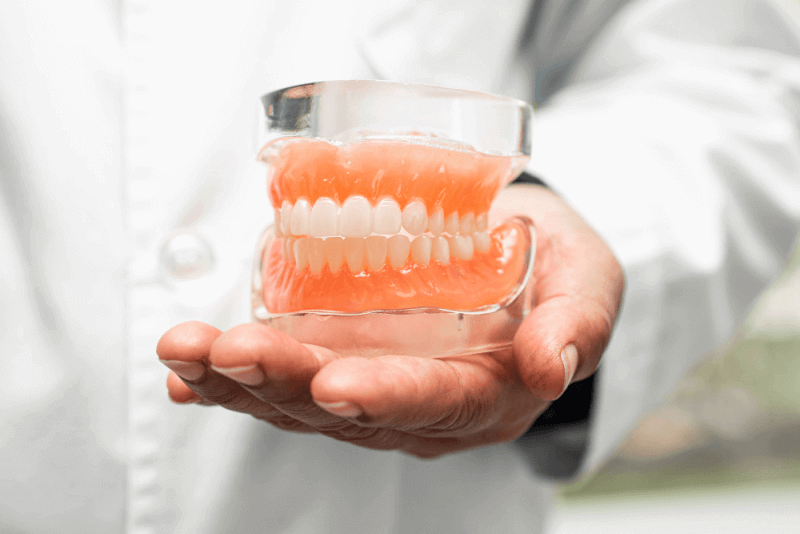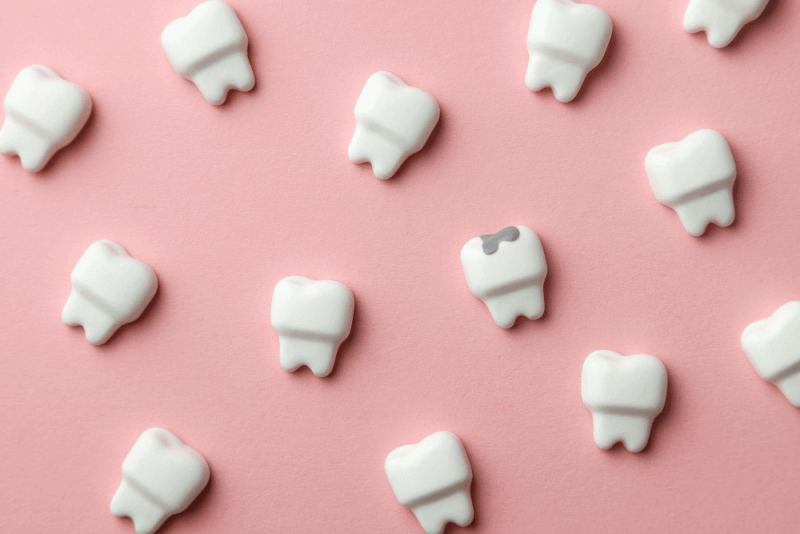How Should Teeth Be Cleaned?
Oral and dental health is extremely important for both general health and aesthetic appearance. Therefore, teeth, gums, and the entire mouth need to be cleaned regularly and meticulously. The following points should be considered during dental cleaning:
- Toothbrushes used for dental cleaning should have soft bristles.
- Teeth should be brushed at least twice a day using up-and-down motions. It is recommended to hold the brush at a 45-degree angle.
- Ensure that all surfaces of each tooth are adequately brushed.
- Do not forget to clean the tongue.
- After brushing, mouthwash should be used for a more effective cleaning.
What is a Dental Cleaning Procedure?
A dental cleaning procedure is performed by dentists and involves a detailed cleaning of the teeth. However, before the dental cleaning procedure, a thorough oral examination must be conducted. If no issues requiring treatment are found during this examination, the dental cleaning procedure is carried out.
During dental cleaning, plaque and tartar on the surface of the teeth are removed. Various tools used in dentistry are employed for this purpose. These tools help remove plaque and tartar from the tooth surface without damaging the enamel. As a result, the tooth surface becomes smooth after the procedure.
In addition to removing plaque and tartar, dental cleaning can also restore the natural color of discolored teeth. Dental cleaning helps prevent issues such as gum recession or gum infections.
How Should a Dental Cleaning Procedure Be Performed?
Maintaining oral hygiene is essential not only for preventing cavities and gum inflammation but also for overall health. Therefore, teeth should be cleaned at least twice a day.
Using only a toothbrush and toothpaste is not sufficient for dental cleaning. Toothbrushes are inadequate for removing food particles from the sides of the teeth. Therefore, flossing should also be included in the routine. This helps remove food particles from between the teeth and prevents bacterial growth.
The final step in ensuring dental hygiene is the use of mouthwash. These specially formulated rinses reach areas that the toothbrush or floss cannot, providing deeper hygiene.
Why is a Dental Cleaning Procedure Done?
The primary purpose of a dental cleaning procedure is to maintain oral and dental health. By cleaning plaque and tartar from the teeth, the growth of bacteria is reduced, thereby protecting oral health.
Additionally, removing these layers helps the teeth appear whiter and shinier. Therefore, some people opt for dental cleaning to achieve brighter teeth.
Types of Dental Cleaning Procedures
There are different purposes for cleaning the teeth. The procedures applied for these purposes diversify the types of dental cleaning. The types of dental cleaning procedures include:
Tartar Removal
Even individuals who perform regular oral care can experience tartar buildup. The main reasons for this include certain minerals found in saliva. Therefore, tartar removal is one of the procedures that should be included in a regular oral care routine. Depending on the speed of tartar development, this procedure can be done every few years.
Tartar is usually removed using ultrasonic devices. Additionally, cleaning solutions that help remove tartar are also used. Water is sprayed on the teeth to remove large tartar pieces from the enamel.
Thin tools are used to clean tartar from between the teeth. These procedures continue until all tartar is removed from the tooth surface. Afterward, a special solution and fluoride toothpaste are used to polish the enamel, making the teeth shine. After tartar removal, nothing should be eaten or drunk for half an hour.
Gum Infection Cleaning
If oral and dental care is not regularly maintained, gum inflammation, also known as gingivitis, can occur. Gum infections can cause redness, sensitivity, and pain. Later, white spots may appear on the gums.
Mild gum infections can occur due to gum injuries caused by consuming hard foods, improper or insufficient brushing, and vitamin and mineral deficiencies. These infections are usually treated by proper brushing techniques and the use of mouthwash and medications prescribed by a doctor.
However, if gum infections are severe or recurrent, it is necessary to clean the plaque and tartar on the teeth. Otherwise, the infections may continue to recur, eventually leading to tooth loss.
Teeth Polishing
Also known as teeth whitening, this procedure removes colored inorganic and organic substances from the pores on the enamel using various gels. This process eliminates discoloration on the enamel. Additionally, it helps the teeth appear shinier.
Post-Dental Cleaning Care
After a dental cleaning procedure, it is expected that the teeth and gums will be sensitive for a while. Therefore, it is important to pay attention to the following points after a dental cleaning procedure:
- If anesthesia was applied before the procedure, do not eat anything until the numbness in the jaw wears off.
- Since the teeth will be sensitive, avoid consuming acidic foods and drinks for a while after the procedure.
- Avoid hard foods for a while as well.
- If any medication is prescribed, ensure to take it regularly.
- It is recommended to rinse with saltwater 4-5 times on the first day after the procedure.
- Avoid consuming cold drinks for one week after the procedure.
- Avoid hot and cold foods and drinks for the first 24 hours.
- If there is swelling in the gums, apply a cold compress.
- If you experience pain, you can take a pain reliever.
- Continue with regular dental care after the procedure.
- It is normal to have gaps between the teeth after the procedure.







